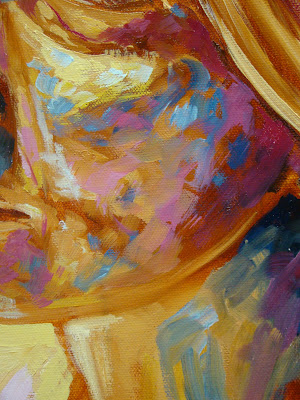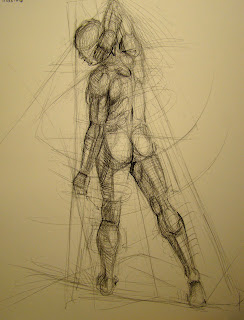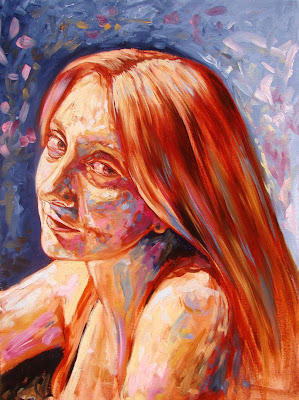
Portrait of my wife at age 29
oil on canvas
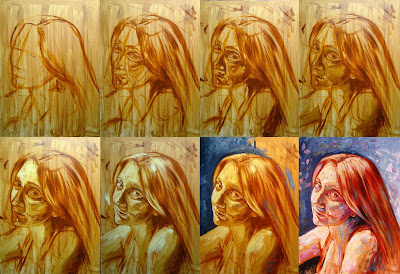
Alla prima: a painting technique in which a canvas is completed in one session, often having a thickly applied impasto.
As we move into a more creative approach with the figure sometimes it is hard for the contemporary fine artist to find a way to express or align with modernism.
I find Alla Prima a temporary effective and strong solution as far as the medium is concerned. Why temporary? Well, it is only my opinion, but it could only be stage or period in the artist's career to move on. This is only an aspect of creativity, but a great ice breaker for style development that will open the door to many possibilities in you art.
Alla Prima is just like the concept of gesturing with graphite, only this time with paint (also works great with acrylics)
In here, once you have your under painting applied onto the canvas you can use it effectively for your advantage, which could be most of the colors that will be associated with your painting.
The benefits
A strong solid painting style application foundation is the essential benefit of this concept.
For those fine artist interested on abstraction (even non-objective)this is the exercise for the comprehension of abstract approaches (I strongly recommend to review the Abstract Expressionists at the beginning-mid of the 20th century and why they did it, and their influence in today's art)
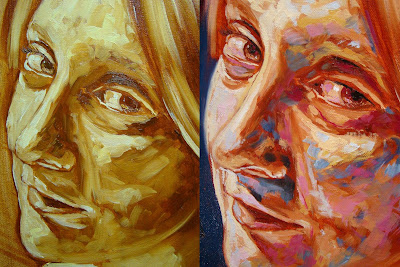
The steps
When selecting what to paint, specially where the figure is related, think about the fact that the more drama you create on your subject the more effective and impacting your painting will be.
Choose a subject with high chiaroscuro, in other words a subject with high contrast and variety of tones and values.
After your under-painting is ready begin by sketching your drawing foundation straight with your painting brush (burnt sienna or other dark earth color associated with the skin). Don't worry about corrections at this point, feel free to build multiple lines with your brush, you'll correct later as you paint.
Remember, with this concept it is our goal to have any painting done in one session (wet on wet). The technique is forcing you to paint fast with a constant loose rhythm, intense brush strokes and fast decision making.
Begin by building your basic color strokes foundation starting with your darkest values using the value next to value technique (refer to: Principles in painting basic realism)
Since we are not blending the painting should have a painterly effect.
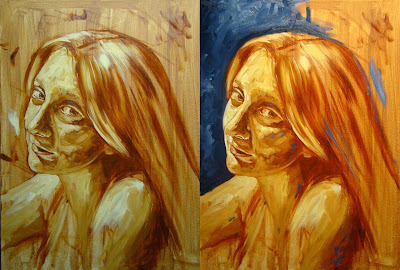
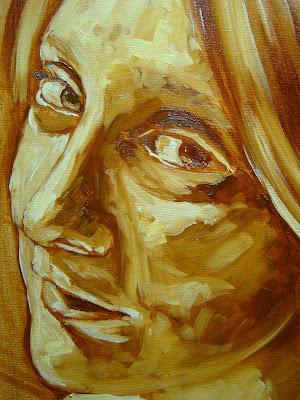
Recommended colors and hues:
- Burnt sienna (dark and middle tones)
- Flesh tint (middle and light tones)
- Naples yellow (light tones)
- yellow ocher ( transitional value in between tones)
- Permanent Alizarin Crimson (red) (dark tones)
Moving into Expressionism
As we approach some of the final approaches with this technique you must think about how far you want to take an approach like this one.
In here the creative process and improvisation takes place. After all your value next to value foundation, it is time to make some decisions on color application.
You can choose any colors you want as long as they are well executed. And also you are still playing with traditional color language such as warm – cool concept
The key for a good color execution is your control over color harmony or color distribution. It is really up to you how far you want to go with this technique or how abstract you want to go(don't abuse the color, you should know at which point you must stop)
Don't over due the color!!!!!!!
Color harmony or distribution is accomplished by the understanding and ability to establish foreground-background relationship where the color is concerned. (see the impressionists)
